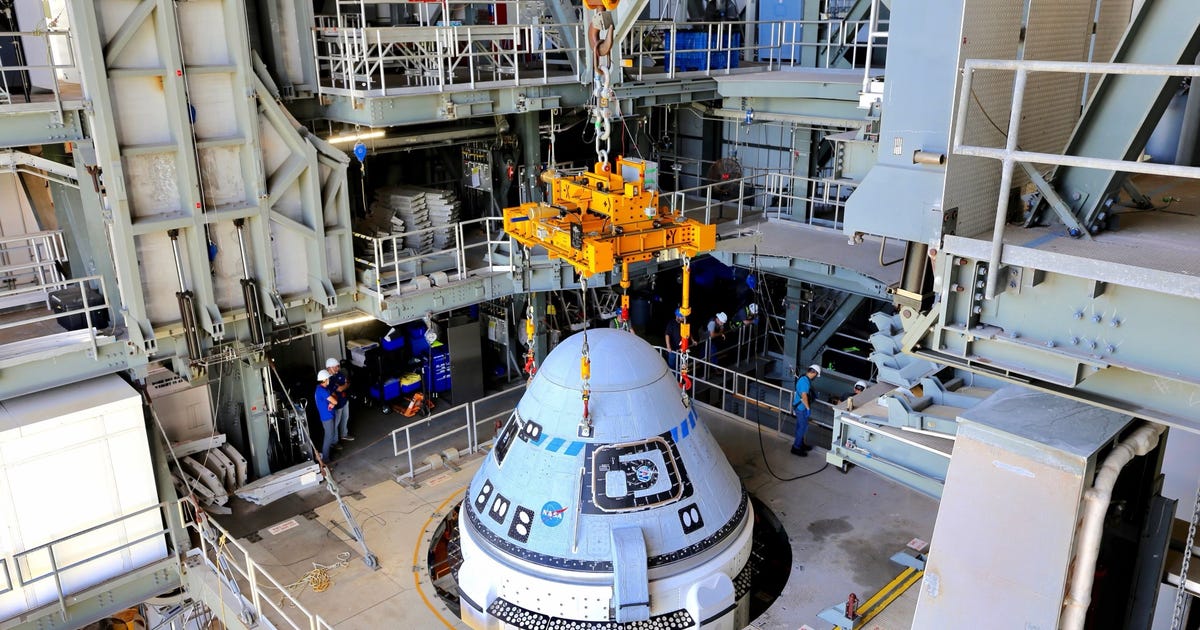
NASA Delays Artemis I Moon Launch to This Weekend
Artemis I , the first mission in NASA's ambitious program to get humans back to the moon, suffered an engine setback just hours before liftoff Monday morning, forcing the highly anticipated launch to be scrubbed. The space agency is now looking at a backup window that opens on Saturday, according to a Tuesday press conference.
At first, the Artemis team was looking at a Sept. 2 do-over date.
"To summarize, we held at T-minus 40 minutes and counting after the team was unable to get past an engine bleed that didn't show the right temperature once they got into the engine bleed test," NASA said as part of its scrub announcement on Monday. "Ultimately, the launch director has called a scrub for the day. The earliest opportunity, depending on what happens with this engine, would be Sept. 2, that is available to the launch team, however we will await a determination."
But then, after reconvening a day after Monday's activities, the team assessed all the data and confirmed that the series of unfortunate events for Artemis I is best addressed with an extra day of work on Artemis equipment. Basically, as Artemis mission manager Mike Sarafin said in Tuesday's conference, problems on launch day began with some weather challenges that delayed the start of tanking, followed by a leak while loading the rocket with cryogenic fuel at what's known as the "tail service mast umbilical" on the hydrogen side.
Somehow, despite that leak, however, the team then managed to work its way through loading the core stage and upper stage with fuel, thus producing a fully loaded vehicle -- then came the nail in the coffin. There was a complication with the rocket's engines.
"We were unable to get the engines within the thermal conditions required to commit to launch," Sarafin said. "In combination with that, we also had a bent valve issue on the core stage, and it was at that point that the team decided to knock off the launch attempt for that day."
Therefore, in conclusion, "we agreed on what was called option one," Sarafin said, "which was to operationally change the loading procedure and start our engine chill down earlier. We also agreed to do some work at the pad to address the leak that we saw...and we also agreed to move our launch date to Saturday, September the 3rd."
From an audience viewpoint, here's what went down on Monday.
After a brief weather delay, things looked on track for Artemis I's bright orange Space Launch System rocket, but a couple of unforeseen technical hurdles quickly arose during its fuel loading stage. On top of that, earlier in the day, NASA broadcasters noted there was a "crack" in the thermal protection system material on one of the SLS core stage flanges, but it was later revealed to be a consequence of the super-chilled propellant, not a structural issue.
With regard to engines, as the rocket's boosters were being filled with liquid oxygen, NASA engineers did note that engine 3 was "not properly being conditioned through the bleed process." This process is meant to allow the engines to chill to the right temperature by releasing a small amount of the fuel. It wasn't working, as Sarafin explained Tuesday.
Back in June, at the time of Artemis I's wet dress rehearsal -- which took four tries to complete -- the team hoped to examine the efficacy of exactly this bleed process, but didn't get to it. "This is something they wanted to test during wet dress four but were unable to," NASA broadcaster Derrol Nail said during the agency's livestream of the launch attempt. "So this was the first opportunity for the team to see this live in action. It's a particularly tricky issue to get that temperature dialed in."
About an hour after trying to troubleshoot the engine 3 bleed problem, the team met with launch director Charlie Blackwell-Thompson to discuss how to move forward. "Right now, the indications don't point to an engine problem," Sarafin said, meaning the setback likely isn't tied to the engine interface itself. "It's in the the bleed system that thermally conditions the engines."
Nonetheless, Artemis I's launch was scrubbed.
"It's just part of the space business -- and particularly a test flight," NASA Administrator Bill Nelson said after the delay was announced on Monday. "We are stressing and testing this rocket and spacecraft in a way that you would never do it with the human crew on board. That's the purpose of a test flight."
Source


